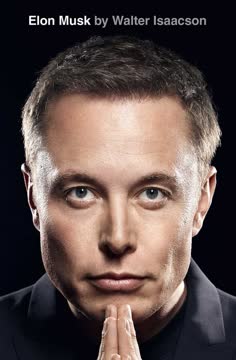Key Takeaways
1. Embrace the Fast/Forward Mindset: Action and Conviction
Fast/forward companies, in a nutshell, are those that exhibit decisive action coupled with emotional conviction.
Decisive action. In today's rapidly changing business world, the ability to act quickly and decisively is paramount. This means prioritizing experimentation, addressing opportunities as they emerge, and making bold bets when necessary. Companies like Amazon, WPP, and Oracle exemplify this approach, demonstrating a willingness to move forward even in the face of ambiguity.
Emotional conviction. Action without direction is dangerous. To channel action effectively, firms need to develop emotional conviction, listening to their intuitive reasoning and creating meaning for employees and customers. This involves tapping into the feelings and values of stakeholders, fostering a sense of purpose that transcends purely rational considerations.
Blend art and science. Success in a fast-changing business world requires a subtle blend of art and science. Rather than getting bogged down in analysis and introspection, fast/forward companies are open-minded and promote action and experimentation. Leaders know when to listen to the data and when to be decisive, relying on both rational judgments and emotional conviction.
2. Recognize the Paradoxes of Progress
The more we know, the less I understand.
Creative destruction. Economic development doesn't happen in a straight line. Every act of creation is also one of destruction, and any advantage a firm has over its competitors comes with a limited shelf life. This requires agility and the capacity to stay abreast of changes in the environment.
Knowledge and ignorance. While the human race is becoming collectively more knowledgeable every year, each of us is becoming relatively more ignorant. This necessitates collaboration and the ability to work effectively in teams, combining diverse fragments of knowledge.
Connectivity and unpredictability. The more we connect, the less we can predict. The global economy is a complex system with so many linkages and feedback loops that it sometimes leads to entirely unpredictable consequences. This calls for a focus on action, experimentation, and learning, rather than rigid planning.
Knowing and believing. Despite advances in knowledge, the importance of nonscientific belief systems is more important than ever. In a world awash in information, our opinions are being shaped less by hard evidence than by appeals to our emotions, intuitive beliefs, and hidden values.
3. Master the Three Models of Management: Bureaucracy, Meritocracy, Adhocracy
Understanding and deploying the full menu is a secret weapon for making progress in the face of paradoxes.
Bureaucracy. This model privileges formal position ahead of knowledge, action, or emotion. Coordination is achieved through standardized rules and procedures, and hierarchy is paramount. While effective in stable environments, bureaucracy struggles with innovation and employee engagement.
Meritocracy. This model privileges knowledge over formal position. Coordination occurs through the mutual adjustment of self-interested parties, and an individual's expertise is what matters. Meritocracies excel in knowledge-intensive industries but can be slow-moving and suppress emotional beliefs.
Adhocracy. This model privileges action over position and knowledge. Coordination occurs around external opportunities, and an individual's action is what matters, particularly when backed by emotional conviction. Adhocracies are agile and empowering but can appear chaotic.
4. Reverse the Strategy Cascade: Action-Driven Insights
In the face of high-uncertainty, trying is better than guessing.
Traditional strategy. The classic approach to strategy involves a cascade of decisions: What do we want to achieve? Where will we play? How will we win? This logic is too slow and formulaic in a complex, fast-changing world.
Reverse cascade. A fast/forward approach to strategy involves a reverse cascade, in which insights based on interactions with customers drive the reflection-and-sense-making process, which ultimately informs the big-picture strategy. This emphasizes action, experimentation, and learning.
Agile principles. Inspired by agile software development, this approach prioritizes working directly with the user, building rough prototypes, and iterating quickly. It also emphasizes real-time information, decentralized control, and a can-do attitude.
5. Anchor Strategy in Purpose: Beyond Shareholder Value
Purpose is a spiritual and moral call to action; it is about what a person or company stands for.
Purpose-driven organizations. Firms with a clear sense of purpose outperform those that focus solely on profit. This purpose provides employees with a clear sense of direction, helps them prioritize, and inspires them to go the extra mile.
Stakeholder focus. Instead of focusing solely on shareholders, consider the needs of other stakeholders, such as employees, customers, suppliers, local communities, and the planet. By serving these stakeholders, the firm gains a raison d'etre above and beyond money making.
Fragility of purpose. The motivation to pursue normative goals is inherently fragile and easily displaced by gain or hedonic goals. This requires constant reinforcement through incentive systems, communication, symbolic management, and formal structures.
6. Coordinate Around Opportunities: Transience and Speed
Strategy is overrated, simply doing stuff is underrated.
Opportunity-focused coordination. Adhocracies coordinate activities around external opportunities, rather than internal processes. This often involves temporary, project-based work with minimal overhead.
Transience and speed. Opportunities are transient, so it's essential to move quickly and decisively. This requires a shift in mindset, prioritizing action over planning and empowering those on the front line to adapt in real time.
Transparency and light-touch management. Effective coordination requires transparency, with open access to information and minimal central control. This empowers front-line employees to make informed decisions and adapt to unfolding events.
7. Cultivate an Achievement-Oriented Culture: Inspiration and Support
Great moments are born from great opportunity.
Inspiration and support. High-achievement teams are both inspired and supported. Inspiration provides a sense of purpose and direction, while support provides the resources and security to do the job effectively.
Sources of inspiration. Inspiration can come from various sources, such as boldness, perfection, benevolence, or domination. The key is to tap into the emotional beliefs of individuals and create a compelling vision of the future.
Support for failure. To encourage experimentation and risk-taking, it's essential to create a culture that tolerates well-intentioned failure. This involves actively reflecting on feedback, setting a positive tone, and being open when things don't work out.
8. Become an Ambidextrous Leader: Adapt and Thrive
So you want me to be half-monk, half-hitman.
Ambidextrous leadership. Effective leaders are adept at shifting their style of working according to the situation they are facing. This requires the ability to both step in and take charge and step back and empower others.
Blending leadership styles. Ambidextrous leaders understand the strengths and weaknesses of different management models and know when to apply each one. This involves balancing control with empowerment and adapting to the needs of the organization.
Emotional conviction. Ambidextrous leaders are able to convey a point of view that resonates with others, inspiring employees to go the extra mile and enthusing customers to buy into their vision. This requires self-awareness, strong communication skills, and the ability to tap into the emotions of others.
9. Embrace Unreasonableness: Challenge the Status Quo
The reasonable man adapts himself to the world, the unreasonable man persists in adapting the world to himself, therefore all progress depends on the unreasonable man.
Unreasonable mindset. In a fast/forward world, it's essential to challenge the status quo and think differently. This involves questioning established norms, experimenting with new approaches, and persisting in the face of resistance.
Experimentation and action. Unreasonable individuals are driven by a bias for action, prioritizing experimentation and learning over analysis and planning. They are willing to take risks and challenge conventional wisdom.
Emotional conviction. Unreasonable individuals are driven by a strong emotional conviction, a belief in their vision that transcends purely rational considerations. This conviction fuels their persistence and inspires others to join their cause.
10. Build a Safety Net: Mitigate Risks of Experimentation
You must reward people for failing. If not, they won’t take risks and make breakthroughs.
Psychological safety. Creating a culture of psychological safety is crucial for encouraging experimentation and innovation. This involves providing support, resources, and recognition for well-intentioned efforts, even when they don't succeed.
Risk mitigation. While encouraging risk-taking, it's also important to mitigate the downside risks. This can involve sequential de-risking, parallel de-risking, or peer support.
Learning from failure. Failure is an inevitable part of the innovation process. The key is to learn from these failures and use them to inform future efforts. This involves actively reflecting on feedback, setting a positive tone, and being open when things don't work out.
11. Prioritize Learning and Reflection: Continuous Improvement
I have not failed, I’ve just found 10,000 ways that won’t work.
Continuous improvement. The fast/forward mindset is not a one-time fix but an ongoing process of learning and adaptation. This requires a commitment to continuous improvement, both at the individual and organizational levels.
Reflection and adaptation. It's essential to make time for reflection, to make sense of the actions you have taken, the feedback you have received, and the problems that need addressing. This involves seeking advice from colleagues, friends, or mentors.
Long-term perspective. The goal is not to achieve perfection but to create a culture of experimentation, learning, and adaptation that enables the organization to thrive in the face of uncertainty. This requires a long-term perspective and a willingness to embrace change.
Last updated:
Review Summary
Fast/Forward receives mixed reviews, with an average rating of 3.90 out of 5. Some readers find valuable insights on innovation, strategy, and change management, particularly complementing other books on similar topics. However, others find certain chapters lacking depth or redundant for those familiar with the subject. The book's ideas on adapting quickly in modern organizations are appreciated, but implementation guidance is sometimes unclear. While some struggle with readability, others find it an interesting exploration of leadership and organizational change in the 21st century.
Similar Books
Download PDF
Download EPUB
.epub digital book format is ideal for reading ebooks on phones, tablets, and e-readers.








